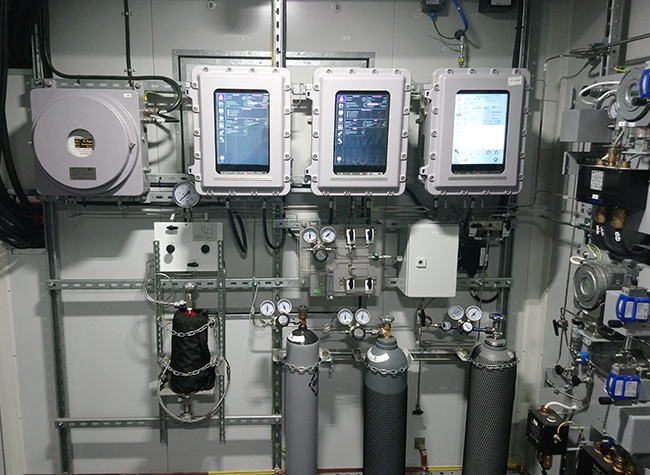
For gas producers, transporters and consumers, precise and fast compositional analysis with further calorific value determination is of utmost importance.
Since the cost of natural gas is determined by its calorific value, precision of compositional analysis defines the profitability of the production.
Online monitoring of process units operation at a GPP by automatic analysis operations will allow you to prevent or considerably reduce production downtime and optimize the facility performance.
Possibilities of the MAG process gas chromatograph:
- Analysis of composition of natural gas and associated gas according to ISO 10723 and ISO 6974 with the calculation of its physicochemical parameters according to ISO 6976;
- Analysis of liquefied natural gas (LNG) and boil-off gas (BOG) composition;
- Determination of sulfur-containing substances in natural gas including H2S and mercaptans and following calculation of total and sour sulfur according to ASTM D 7493 and ISO 19739;
- Extended natural gas composition analysis:
- additional analytical channel for determining the content of hydrogen and helium with a carrier gas argon;
- additional analytical channel for determining the molar fraction of oxygen;
- extended analysis of the hydrocarbon composition of natural gas to C8 (C9+);
- additional analytical channel for methanol analysis;
- combined analysis of the component composition of natural gas in accordance with ISO 6974 and sulfur-containing compounds in NG in complying with ASTM D 7493, ISO 19739.
- Determination of mass concentration of hydrogen sulfide and carbon dioxide upstream and downstream of the treatment package (acid gas removal);
- Continuous quality control during NGL recovery:
- primary materials: conditioned reservoir gas, associated petroleum gas;
- marketable product: dry stripped gas (methane, partly ethane), natural gas liquids (С3-С5 + superior).
- Composition monitoring of fractions obtained at the gas fractionation plant;
- Helium concentrate analysis;
- Control of power-to-gas processes (H2 and H2+ NG mixtures).
The above list is not exhaustive. To clarify the possibility of using the chromatograph MAG to solve a particular analytical problem, please fill in a questionnaire.
For details, please see the brochure.
Benefit of using the MAG process gas chromatograph:
- Higher level of automation, fewer manual operations
- Cut down costs on material recycling and disposal of rejected products
- Enhance performance of existing units
An optimum solution for these tasks is continuous composition monitoring of raw materials and products by process chromatographs and gas analyzers.

